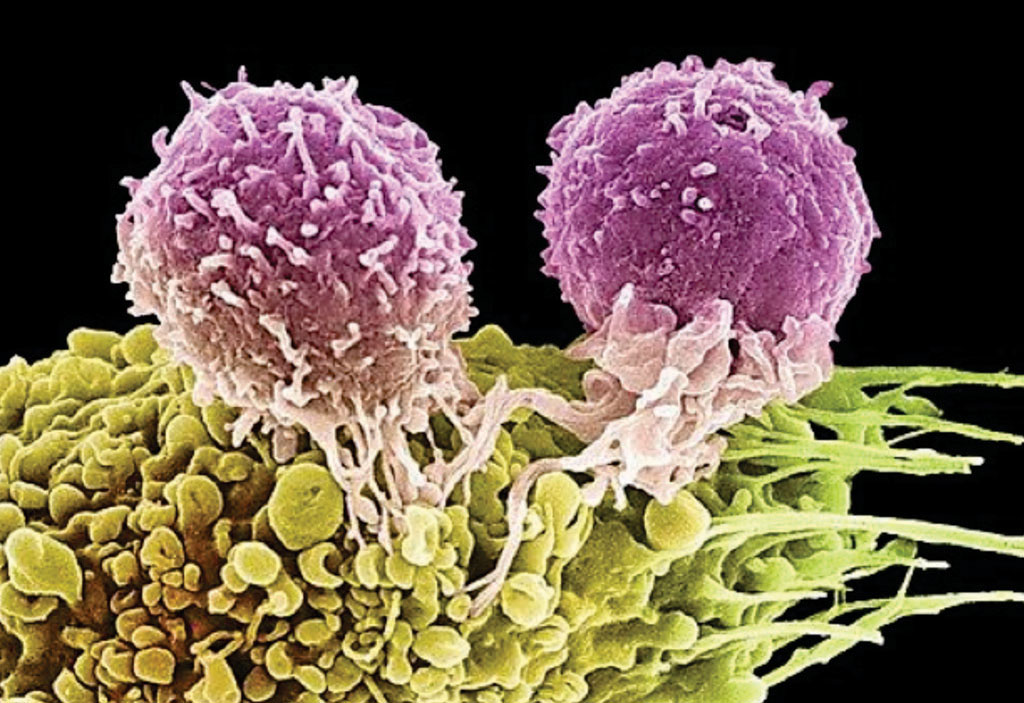Variations in T-cells Identifies Susceptibility to Disease
By LabMedica International staff writers
Posted on 09 Dec 2016
Different cells of the human body differ greatly in structure and function; however, variation exists even among cells of one type and it is now suggested that the magnitude of such differences in T lymphocytes, or T cells, may indicate an individual's age and genetic predisposition to disease.Posted on 09 Dec 2016
Learning more about so-called cell-to-cell expression variation, or CEV, may further illuminate how the immune system functions and one day serve as a diagnostic tool to help implement personalized medicine as CEV is a prevalent feature of even well-defined cell populations, but its functions, particularly at the organismal level, are not well understood.

Image: A colored scanning electron micrograph (SEM) of two T lymphocyte cells attached to a cancer cell (Photo courtesy of the National Institute of Health).
Scientists at the US National Institute of Allergy and Infectious Diseases (Bethesda, MD, USA) used single-cell data obtained via high-dimensional flow cytometry of T cells as a model to introduce an analysis framework for quantifying CEV in primary cell populations and studying its functional associations in human cohorts. They used data from a previous study in which blood samples from a healthy, unrelated cohort of individuals were drawn at an initial visit, one week later, and at two months.
The scientists analyzed different subtypes of T cells, immune cells that facilitate, regulate and direct the destruction of infected or cancerous cells, in these samples by quantifying protein expression in single cells. While identifying cell-surface proteins is a standard method for categorizing T cells, the team also quantified cell-to-cell variation of protein levels and compared how such differences varied among individuals and in a single person over time.
The analyses of 840 CEV phenotypes spanning multiple baseline measurements of 14 proteins in 28 T cell subpopulations suggest that the quantitative extent of CEV can exhibit substantial subject-to-subject differences and yet remain stable within healthy individuals over months. Although the degree of cell-to-cell variation for many protein and cell combinations remained relatively constant in individuals over the two-month observation period, the magnitude of variation seemed to differ among individuals and could serve as unique personal markers.
Furthermore, certain variations were associated with age and carrying genes linked to disease. For example, individuals who carried a genetic variant associated with an increased risk for developing asthma were more likely to have more variable expression of a specific protein called CD38 among a subtype of T cells. The team plans to use the framework they developed to help identify potential CEV biomarkers for autoimmune diseases and other health problems. The study was published on November 15, 2016, in the journal Immunity.
Related Links:
US National Institute of Allergy and Infectious Diseases














